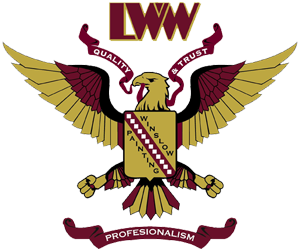Paint is a mixture of solvents, resins and pigments. Solvents are what makes paint ‘wet’. Most interior paints are latex and the solvent is water, while oil-based paints use mineral spirits. When the solvent evaporates, it leaves the resins which are the binders that hold together the pigments and binds the paint to the surface. Pigments are the color.
Interior & Exterior Paint Requirements
Interior paints are formulated to resist scrubbing, scuffing and abrasion. The resins dry more rigid than exterior paints. Exterior resins must survive dramatic temperature changes, some in short intervals, and are exposed to moisture and algae and fungus. Exterior paint has to resist peeling, chipping and fading from the sunlight exposure, therefore softer resins are used in exterior paint. The primary difference between outside and inside paints are the resins. Pigments can be universally used in either, as it depends on the resin to hold it in place, and if outside protect it from fading and the weather.
Primer Paint for Walls
Paint usually works better with a primer. Primers are formulated to adhere to the surfaces like concrete, wood, plastic and metal. Some primers are somewhat universal, and provide for better adhesion and protection. It should provide a sealed, bonded and stable surface for the topcoat. Basically, the primer makes the paint stick better, while some paints are self-priming. A primer is usually required for plastic surfaces as these are notorious for peeling, especially the shiny and smooth plastics. Some colors or stains ‘bleed through’ or are visible through the new paint coat. Nicotine stains and reds are primary problems you may need to pre-coat with anti-stain or anti-bleeding coat to mask the stains or old paint. Good primers not only prevent bleed through but seal concrete and block, some will block and seal odors like cigarette smoke or a traumatic injury or death scene. The primer can also fight mildew and other fungal or mold invaders, and of course promotes adhesion.
Types of Paint Sheen Finishes
Flat, satin, semi-gloss and gloss are all personal taste and aesthetics. Most of us would prefer a shiny glossy car but would reject the ‘foot deep’ appearance in a residential application, while the majority would reject a flat finish on our vehicles, military applications aside. Flats and eggshell finishes are more forgiving of holes and patches than a high gloss finish. In fact, glossy finishes tend to highlight flaws. Glossiness is also referred to as ‘the sheen’. Gloss is related to reflectiveness of the paint. High gloss is 85% gloss and up. while gloss is 70-85% gloss. Semi-gloss drops to a 35-75% sheen, good for trim as it doesn’t revel flaws like the other two. Satin provides for a sophisticated look with a 25-35% gloss, and is still cleanable in high traffic areas. Satin fills in nail holes, blemishes and minor damage better that the glossier finishes. Egg-shell drops to a 10-25% sheen, great for walls, care must be taken in cleaning but this finish hides flaws, but looks little more upscale than flat. Flat finish paints are only 0-5% sheen, hide flaws, nails and slight damage, are easier to repair and match than the other finishes. Flats are ubiquitous and used every-where from budget applications to the very expensive. The old wall champ it will cover and hide many an objectionable flaw.
Painting Services & More in Amagansett, Bridgehampton, Eats Hampton, Hampton Bays, Montauk, North Haven, North Sea, Noyack, Quogue, Shelter Island, Sag Harbor, Sagaponack, Shinnecock Hills, Southampton, Springs, Wainscott, Watermill, Westhampton, West Hampton Beach, New York
L.W. Winslow Painting, Inc can handle all your interior and exterior painting needs. We can help you choose the right color and finish best for your home or business. Contact us to schedule a consultation today!

